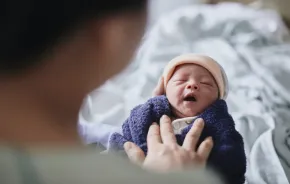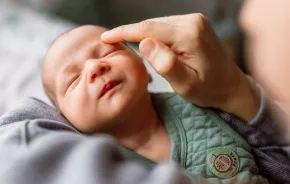 A Ohio clinic has announced it will perform 10 uterus transplants — the first such program in the U.S. — as part of a research study. The only country that has successfully completed uterine transplants is Sweden, which reports nine successful transplants. From these transplants, five pregnancies and four live births have occurred.
A Ohio clinic has announced it will perform 10 uterus transplants — the first such program in the U.S. — as part of a research study. The only country that has successfully completed uterine transplants is Sweden, which reports nine successful transplants. From these transplants, five pregnancies and four live births have occurred.
The organs will come from donors.
While other hospitals in Great Britain and the U.S. are also on a path to performing their first uterine transplants, the Cleveland Clinic team is the closest to performing this groundbreaking operation, which is still considered experimental. The purpose of the surgery is to give women with uterine factor infertility (UFI) the option of carrying a pregnancy. Some women with UFI are born without a uterus, while others acquire UFI after a hysterectomy, or because of pelvic inflammation damage or abdominal or pelvic surgery.
“Women who are coping with UFI have few existing options,” says Dr. Tommaso Falcone, Women’s Health Institute chair at the Cleveland Clinic. “Although adoption and surrogacy provide opportunities for parenthood, both pose logistical challenges and may not be acceptable due to personal, cultural or legal reasons.”
 While surrogacy is an option in the U.S., that route is still “legally complicated [and] in other countries, surrogacy is often highly restricted or banned outright,” the clinic stated in a press release.
While surrogacy is an option in the U.S., that route is still “legally complicated [and] in other countries, surrogacy is often highly restricted or banned outright,” the clinic stated in a press release.
Women with UFI are watching as the surgery comes to the U.S. for the first time. In September, the Cleveland Clinic began the screening process of 21–39-year-old women with UFI.
The New York Times reported that eight woman have started the screening process. One potential candidate, a 26-year-old who was born without a uterus and has two adopted children, talked with writer Denise Grady about the fact that if she has a successful transplant, she’ll have to undergo in-vitro fertilization and take anti-rejection drugs during pregnancy and deliver the baby by cesarean section. The uterus would be removed after childbearing.
“I know the risks,” she was quoted as saying. “It’s a high-risk pregnancy. But I think we’re in the best of hands. I think we can handle anything that comes our way. I know there will be people who don’t understand or agree. But this is not a whim.”











